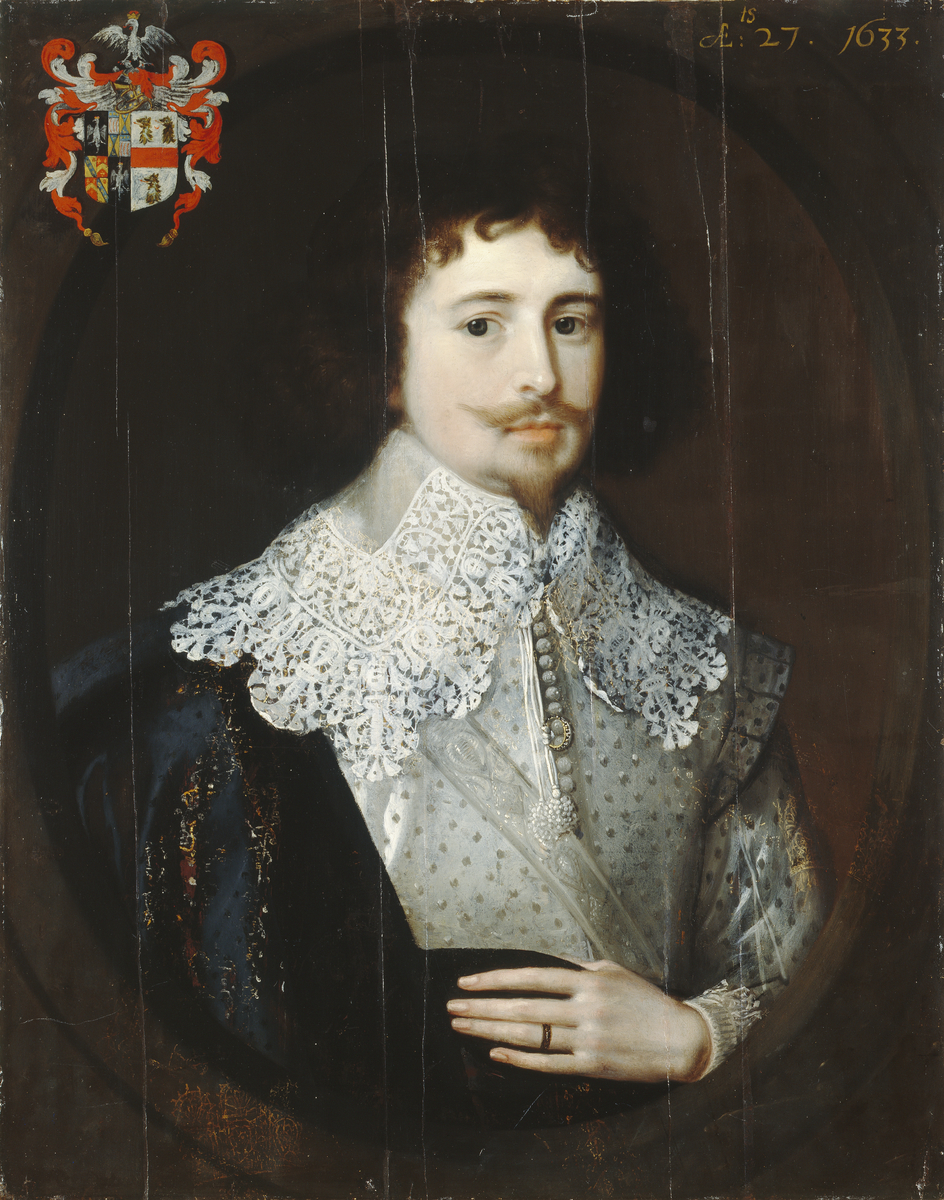William Buggin
Summary
A three-quarter, right side portrait of William Buggin (1604-1657). He is a young, lightly-bearded gentleman who looks straight out at the viewer. He wears a wide lace falling collar, a high-necked jacket with a lace trim on the cuffs and a white sash across his chest. His left hand, raised to keep a cloak in place over his right shoulder, reveals a ring on his fourth finger. A second ring, tied to collar or shirt strings, hangs at his chest. This painting perhaps marks William's betrothal to his wife Mary Millet (1617-1659), portrayed in an accompanying painting (accession number 1947.9). The feigned oval frame has a coat of arms superimposed at the top left corner, together with the sitter's age: '27'. Although these might be described as betrothal portraits they are dated 1633, after William's marriage to Mary at the bride's home village of Denham, Bucks on 2 September 1632. Perhaps the betrothal took place in June/July 1632. The dates and ages could have been added a bit later, which might explain them clashing (they would have been 29 and 16 in 1633). This painting was the subject of research initiated by the Art Detective UK website in 2020, which identifed the sitter. William Buggin was originally from Middlesex (he was baptised at Clerkenwell on 21 June 1604).. This was due in large part to the heraldic expertise of the Garter Principal of Arms, Thomas Woodcock, who closely examined a photograph of the coat-of-arms in the top left corner. Decades of experience of looking at 17th-century heraldic art told him that the 'eagle' was really a cockatrice (a mythical beast) and that the 'wolves' were really dragons, which led to confirmation of William Buggin's identity in baptismal and other records. Family set of four: 1947.8-11
Display Label
Intricate and complex tassels were used in the seventeenth century to decorate the ends of ties at the necks of a number of items of linen, including shirts, shifts, hoods and in this case, collars. They can also be found on bags and purses with drawstring openings, and as decoration on needlework-tool cases or pincuchions. Contemporary portraits can show remarkably similar tassels to those on surviving garments, often painted to show the most involved and complicated detailing. This pair of minutely knotted and twisted tassels are used to trim the ends of a pair of ties on a man's linen collar or ruff of the 1620s which is part of the Filmer Collection. This ruff itself has four separate flounces or falling bands in a finer linen than the neck piece, edged in narrow bobbin lace, and it would have been worn falling over the neck of an embroidered doublet, as seen below in the two portraits of men from about 1630.
Object Name
William Buggin
Creators Name
Date Created
1633
Dimensions
Panel: 78.1cm x 61.3cm
accession number
1947.11
Place of creation
England
Support
Panel
Medium
oil paint on panel
Credit
Presented by Miss Henrietta Close through the National Art Collections Fund.
Legal
© Manchester Art Gallery

